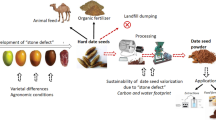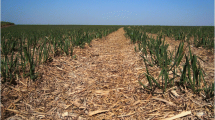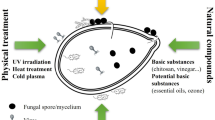Abstract
The current production of sugar in Bangladesh is only about 5% of total demand. About 20% demand is fulfilled by jaggery production mainly from sugarcane and remaining 75% of total requirement is fulfilled by importation. The main causes of lower sugar production of the industry include less supply of sugarcane in the factories and very poor sugar recovery. The area under cane cultivation is drastically reduced due to pressure of cereals and other short-duration crops which cause lower amount of sugarcane production. The yield of cane per unit area is lower than the other sugar producing countries. The government of Bangladesh is emphasizing the attainment of self-sufficiency in sugar and jaggery production by boosting up the sugarcane production in the country. Moreover, the government has taken some steps to introduce tropical sugar beet for sugar production. Considering this aspect, Bangladesh Sugarcrop Research Institute (BSRI) has developed and recommended a good numbers of sugarcane production technologies from planting to harvesting. The technologies include releasing of a large number of high yielding, high sugar content, diseases and pest resistant sugarcane varieties, intercrop** with sugarcane, spaced transplanting technology, ratoon management technology, diseases and pest management technology, updating the fertilizer dose for 12 agro-ecological zones and development of some important implements for sugarcane cultivation. BSRI released some varieties which are suitable for jaggery production and some are abiotic stress (drought, water-logging, saline and flood) tolerant. Moreover, BSRI has been doing research on tropical sugar beet to introduce its cultivation in the country. Introduction of sugarcane in the river basins, plain land of hilly areas and the saline areas can considerably increase the sugarcane production. Furthermore, if the BSRI-recommended technologies are followed properly, the sugarcane production and thereby sugar and jaggery production will be certainly increased.








Similar content being viewed by others
References
Anonymous. 2011–2012. Annual Report, Bangladesh Sugar and Food Industries Corporation (BSFIC), Dhaka, Bangladesh. pp 10.
Anonymous. 2012–2013. Annual Report, Bangladesh Sugar and Food Industries Corporation (BSFIC), Dhaka, Bangladesh. pp 10.
Anonymous. 2015a. Khamarbari, Dhaka, Bangladesh: Department of Agricultural Extension (DAE).
Anonymous. 2015b. Unpublished Report of Bangladesh Sugar and Food Industries Corporation (BSFIC), Dhaka.
Anonymous. 2016a. Krish diary, agricultural information service. Khamarbari: Department of Agricultural Extension (DAE).
Anonymous. 2016b. Annual Report. Ishurdi, Pabna: Breeding Division, Bangladesh Sugarcrop Research Institute.
Author information
Authors and Affiliations
Corresponding author
Ethics declarations
Conflict of interest
The authors declare that they have no conflict of interest.
Rights and permissions
About this article
Cite this article
Rahman, M.S., Khatun, S. & Rahman, M.K. Sugarcane and Sugar Industry in Bangladesh: An Overview. Sugar Tech 18, 627–635 (2016). https://doi.org/10.1007/s12355-016-0489-z
Received:
Accepted:
Published:
Issue Date:
DOI: https://doi.org/10.1007/s12355-016-0489-z




